#maramă
Text
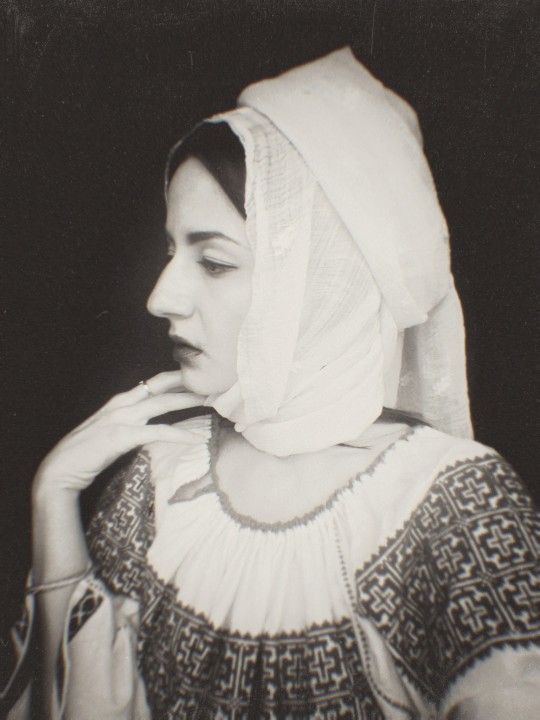

🌹
#romanisme#romania#romanian blouse#lablouseroumaine#Teleorman#maramă#traditional clothing#ie#romanian folklore#slavic folklore#vintage photography#eastern europe#balkans
79 notes
·
View notes
Text
Clothing Styles


Mens Clothing-Portrayed men in white shirts and trousers. In Romania they are called cioareci. Over they wore shaggy Romanian (sarici) with long sleeves and left on back they are made out of sheep fur,they keep you warm during cold weathers.
Men’s traditional clothing throughout Romania comprises a white shirt (cămasă), the white trousers shown,a hat, belt, waistcoat and or overcoat. Local differences are indicated by shirt length, type of embroidery, trouser cut, hat shape, or waistcoat decoration. This is a basic Balkan man’s costume largely uninfluenced by fashions from west or east. Hungarian and Saxon men living in Romania wear trousers with a more modern cut, often made of dark material rather than white. This reflects their closer ties, and more frequent communication, with the west.

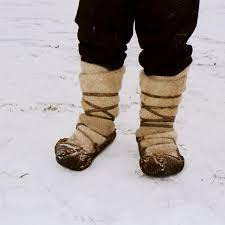
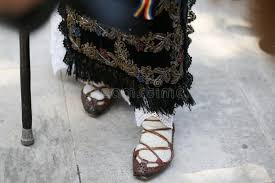
They wore simple leather shoes that are called opinci. The oldest type of footwear is peasants sandals which were made from cow, ox or pig. They also had black sheepskin hats. The shepherds wore this specific style in the past.They had no other ideas how to make shoes so they came up with the idea of using these as they do keep your feet warm during cold temperatures because it is layered with pigs skin.Although things have changed since that period and Romania has a bigger understanding with how to make proper shoes and by not killing so many animals.
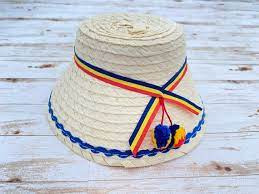
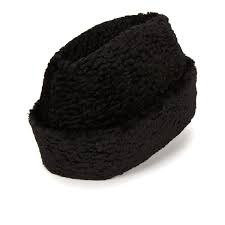

Their are four types of hats which province from specific regions: (căciulă țuguiată, moțată, cujmă) as the main ones.
some of these styles are shared with the other Balkan nations. Most fur hats are black, although white (caciula) are worn in parts of Banat (region lying in Romania, Serbia and Hungary) and grey in central and northern Moldavia.
It can be worn peaked, with its top bent forward, back or sideways, or with its top sunk inwards, depending on local fashion. It is worn in Banat, Maramures, Moldavia, Muntenia and Oltenia. In the Banat Mountains, the cap is sometimes worn with the fur on the inside and a narrow white fur hem at the base. Such hats were worn by free men.
A round low cap known as cujmă rotilată is worn in Maramureș, consisting of two parts: a long band forming a cylinder and a round top sewn to the upper edge of the cylinder.
Caps made of a single piece of fur are also found in Maramureș and Oaș. These are made by stretching the raw fur on a spherical wooden shaped block which makes it take the shape of the head.
A cylindrical fur cap with the top larger than the base căciulă joasă is worn by shepherds on both sides of the southern Carpathians in Mărginimea Sibiului, Maramureș, Muntenia, Oltenia and Vrancea and also in Bărăgan Plain and Dobruja due to these areas being used for summer pastures by the Carpathian shepherds

Another jacket made of fleece is called gubă. It is worn by both men and women in winter and is made of wool in its natural colours. It has a fluffy effect made by brushing up the wool or adding additional yarns into the woven wool. The square-shaped jacket extends to the hips. The edges are bound with dark velvet and it is lined with patterned cloth.
Theses coats have a very look alike aspect in style with Romanian traditional clothing and are similar to Dior collections. This video will show you and explain how Romanians traditional clothes look like during the past to present and similar to The biggest brand of Dior. Romania's type of clothing used to be called Bihor. This is where Dior got some of the designs and ideas from. This is more information that is explained in this video and showed you how it came to this.
youtube
Womens clothing
Patronesses and peasant women wore identically tailored shirts, distinct being only the methods used for decoration. Like them, patronesses wore on head long head kerchief called (maramă) that is a head covering made of floss silk or flax, that hung on back. They had a great aesthetic and social value for women. Young girls accustomed to walk bareheaded whereas the married women wore the head covering.

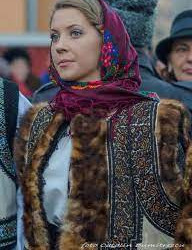
The three-part decor code of this pleated shirt is almost the same, the (altiță) that is derived from Serbian, there is a single horizontal row on the sleeve, known as (increț), and diagonal stripes below the armpit and shoulder called the (râuri). The upper arm embroidery characterizes the entire costume. Each blouse tells a compelling story about the region it comes from through the symbols and colors used.
Altita

Incret
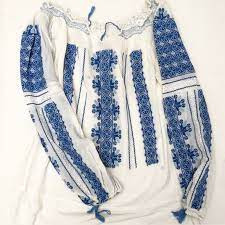
They also wore Ie which is the type of shirt of a typical gathered form of the collar, which has existed since ancient times. It is also known as the "Carpathian shirt" similar to the Slavic (Bulgarian, Serbian, Ukrainian etc.).

Women also wore black or greyish brown woven material that covered the front of the body (like an apron) and the back called a (fota) a richly ornamented wrap-around skirt made out of a rectangular piece of woollen fabric worn at the waist.


This idealisation of Romanian clothing appeared in the mid 19th century in order to differentiate their culture to the other ones. Nowadays, the Romanian people as a national motif during certain events and celebrations in folk dances.
Marandici, I. (2022). Traditional Romanian Fashion With an International Appeal. [online] 3 Seas Europe. Available at: https://3seaseurope.com/traditional-fashion-romanian/.
0 notes
Note
So all of the Omegas and Gammas wear head coverings like the bonnets in The Handmaid’s Tale?
Not all, only a portion of them would wear bonnets based on the region they live in.
In fact, unmarried Omegas and Gammas would not wear head coverings and in several districts, they won't wear it regardless if they're married or not.
While Sol Fertilis' state religion is mainly based on Ancient Roman religion, in its early days, including the days before it was officially created, the PNP worked with conservative religious groups in order to get their votes. This includes Orthodox, Protestants, Muslims, Jews, Hindus, and Catholics.
Despite Sol Fertilis getting rid of those groups, their followers remain and it kinda stuck. As long they dissociate from the religions, they can wear their head coverings.
(Keep in mind, these are regions do not mandate head coverings, only certain districts within them do)
Southern Rural Range- Church crown/hat
Mediterranea- Various; Primarily hanging veils, beret, mantilla, shpitzel, netela, head tie, and shawl; Some do not wear any head coverings
Fertile Crescent- Head scarf, mitpaḥat, and shawl
Arab Oases- Shawl, gargush cap, hijab, and head scarf
Indian Peninsula- Dupatta
Hispania Coastal Plains- Mantilla
Southeast Islands- Mantilla and hijab
Midwest Grasslands- Bonnet
Slavic Meadows- Maramă and head scarf
Eastern States- Head scarf
Hispaniola- Head tie and mantilla
Northeast Valley- Church crown/hat and bonnet
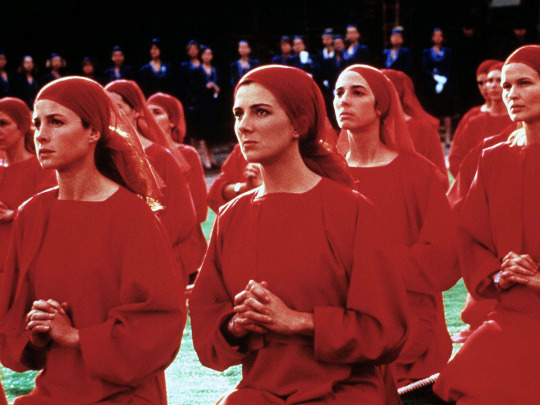
(Example of an Omega hanging veil)

(Example of an Omega mantilla)

(Example of a Gamma Plus head tie)

(Example of a Gamma Plus church hat)

(Example of a Gamma Minus snood)

(Example of a Gamma Minus hijab)
#Sol Fertilis#dystopian#dystopic#dystopia#dystopian omegaverse#omegaverse#omegaverse au#ask#omegas#gammas#clothing
0 notes
Text
turn to dust
Angstpril 2022. Day 2. “Can’t go home.”
Joan origin story! (or a draft of it.) She’s referred to as Ioana in this because it’s the early days. (For those unaware, Joan is my oc for The Old Guard.)
TWs: earthquake aftermath, blood, death/dead body, shock
other notes: maramă - headscarf. Joan is Romanian - ignoring the technicality of her being born before Romania was a unified country.This is set at some point in the 1400s, and I have done some research into the time and place, but if you see something you know is wrong, please let me know!
.
Ioana’s ears were ringing – that was the first thing she was aware of as her consciousness slowly returned. She sucked in a deep breath and tasted dust and something else in the air. Her lungs protested the sudden action and she coughed violently, fighting the urge to curl in on herself as her ribs ached.
She couldn’t do it even if she wanted to, she realized. She was lying on her stomach, her face pressed into a stone floor, and something heavy was on top of her. Ioana slowly opened her eyes – she was immediately blinded as the layers of dust coating her eyelids and eyelashes fell into her eyes, and she shut them at once, fighting the urge to blink rapidly as tears sprung forth. Ioana reached blindly behind her, trying to grab whatever was laying on top of her. Her fingers ran over a rough surface. It was a thick piece of stone that had fallen across her back. How had it-
Ioana took another deep breath and let out another violent cough. More dust spilled across her face at the movement. She kept her eyes firmly shut.
Her ears were still ringing. She lay there, breathing in the dust. Memories were coming back to her. She had been standing in the church with her sister. They had begun to pray. Adina whispered something to her, a small smile on her lips; Ioana had started to reply, something as witty or joyful as whatever Adina had said – Ioana couldn’t remember now what it had been.
Then, suddenly, a feeling beneath her feet, one that travelled through the ground and into her feet and throughout her body, into her bones, into her teeth. The ground was shaking. There were some confused voices rising from behind her. The walls were shaking. People started shouting. Everything was shaking.
She had barely moved from her spot when she had heard a violent crack. Pain had exploded throughout her skull. The world had gone black. She didn’t even remember hitting the ground.
An earthquake. A piece of the church was on top of her – part of the ceiling, part of the wall, she didn't know. It was keeping her pinned down, although it only lay on her left side.
Not quite sure how she had started moving, Ioana slowly inched her right hand forward. Her left arm was pinned between her chest and the floor, and she couldn’t wriggle it free without it sending an ache throughout her whole chest. She grabbed blindly at the floor, before laying her hand down flat and firm and trying to pull. Her hand slipped. She dug her fingers into the stone and tried again.
Her body moved, just an inch. She dug her fingers back into the stone and pulled again, and again, until she was able to free her left arm and pull the rest of her free, the stone laying on top of her scraping her side and slamming to the floor with a heavy whump she barely heard. She lay there on the floor for a moment more, sighing in relief as the pain in her ribs and her back subsided. She felt a strange sensation in her chest that had her holding her breath – things were moving inside of her, snapping into place, and with every movement she felt she could breathe more easily.
She lay there and let it happen. She didn't feel like she could care.
Ioana got up. She heard her dress rip as she did, the part of her shirt still caught under the stone. Dust spilled down her face from her head. She got to her knees and took hold of the edge of her maramă, shaking the dust out, and then wiped her eyes with it. She pressed the fabric to her face and breathed in and out through it, inhaling her own scent stuck to it. There was something else there, too, something wet and sticky.
Ioana opened her eyes.
The brightness was nearly overwhelming. She had to blink several times before she could keep her eyes open.
The wall they had all faced, where the pastor had stood, was completely gone. Piles of rubble had replaced it. The other walls seemed mostly fine. She looked up. The ceiling had given in entirely. She could see the sky – it was still morning. The sun still shone. The sky was still blue.
Ioana looked down.
Her sister was half buried under rubble. Her neck was bent at an odd angle. Blood had soaked through her maramă and dripped from her open mouth.
Her stomach lurched. Ioana felt like she had been flung back into her body, no longer distant or dazed.
The ringing in her ears faded. Now she could hear the sound she had blocked out before – people screaming. People crying. People shouting at each other. All in the distance, merging until she couldn’t make out one voice from the other.
She could hear herself screaming.
Ioana fell forward, barely keeping herself from hitting the ground by throwing her hands out. She crawled forward, her screaming tapering off into unsteady gasping and frantic whispers: “Adina, Adina, Adina-”
She made it to her sister’s side. Her hands hovered over Adina’s face, not knowing what to do, how to do it. Adina’s eyes were wide open, brown eyes staring ahead, glassy and indifferent – nothing lively, nothing joyful, nothing there. Ioana cupped her sister’s face in her hands and turned her to look up at the sky, up at her. More blood trickled forth from her mouth and spilled down her cheek, landing on Ioana’s skirt.
Ioana took several deep breaths. Adina was dead. Adina was dead. Her sister was dead.
What had Adina said before? She couldn’t remember. Her sister’s last words to her and she couldn’t remember.
She couldn’t catch her breath. She couldn’t breathe. Her eyes were burning, her vision going blurry.
Ioana raised Adina’s head and placed it on her lap. She pressed her hand against the blood-stained spot on her maramă. She pushed her hand underneath the headwrap and felt the part of her sister’s head that had caved in, struck by something, perhaps a part of the church, or maybe she had cracked her head on the floor or the bench-
But she had also-
She remembered pain throughout her skull. She put her hand to her own head, slipping underneath her scarf, searching for a gash or crack of her own.
Hadn’t she also-?
“Hey!”
She looked up sharply, tears spilling free. A woman was approaching her. People were behind her, moving rubble and moving bodies, moving people, but the woman was approaching her.
“Are you hurt?” the woman asked in Ioana’s language, although she didn’t sound like a local. She was a tall woman dressed in foreign clothing, like what people were said to wear further west. “Can you stand?”
Ioana nodded but hunched further over Adina’s body.
The woman looked at her with sympathy. She held her hand out. “Come on. If you can stand, I can get you help.”
“But my sister-”
“I’m sorry,” the woman said. She didn’t say anything more. Her hand remained out.
Ioana looked down at Adina’s face once more. Taking a deep breath, looking into blank brown eyes that matched her own, she slowly moved Adina’s head from her lap before she reached out and took the foreign woman’s offered hand.
The woman brought her to her feet and helped her steady herself when Ioana almost collapsed again. She put her hand on Ioana’s back and led her away from the body and out of the church without a word.
“Yusuf! Quynh!” the woman called out when they stepped out of the church. Two other people approached – an Arabic man and an Asian woman, both in foreign dress like the tall woman. “Quynh, help me with the bodies in the church. Yusuf, take her to Nicolo.”
The Asian woman nodded. Both foreign women stepped back into the church. Ioana looked back and almost followed them, wanting to go back to her sister. The Arabic man stopped her, taking her by the shoulder and hand and leading her away.
“Come on,” he said gently. “I’ll take you to get help.”
She didn’t need help, though. She didn’t say anything. Her tongue stuck to the roof of her mouth and her throat was dry.
“What’s your name?” he asked her.
She swallowed harshly. She forced herself to speak. “Ioana.”
“A nice name. I’m Yusuf. The women before were Quynh and Andromache.”
Ioana was barely listening. She was staring at her town.
It was so strange. There was rubble where there had once been homes. Fragments of buildings remained, like the eggshells that were left when the yolks and whites had been used. She had walked down these streets just this morning. How had everything disappeared so quickly?
Tears had started rolling down her cheeks without her realizing.
“I’m sorry,” Yusuf said. He sounded like he meant it.
Yusuf brought her to another man, the Nicolo that the tall woman had mentioned. It seemed like all the injured people had gathered in the town square and were being treated by him as well as the town doctor.
“Nicolo!” Yusuf said. The other man, a man with sandy brown hair, finished wiping blood from an unconscious man’s forehead – it was Stefan the butcher, Ioana realized – and looked over at Yusuf. He smiled slightly when he saw them, though it fell when his eyes landed on Ioana. He approached the two of them.
“I’ve got her,” he said, putting his hand on her back. “You alright, Yusuf?”
“I’m fine,” Yusuf said, and then he called the man a word she didn’t recognize. Nicolo returned the word with a foreign word of his own and a brief smile before Yusuf turned to Ioana, gave her a tired smile and a shoulder squeeze before taking off, back the way they came.
“Come,” Nicolo said. He had an accent she didn’t know – another foreigner, just like the other three. “Let me look at you.”
“I’m not hurt,” she said. She brought her hand to her face and wiped her eyes. “I’m fine.”
Nicolo didn’t look convinced. “You’re bleeding.”
“I am?” Ioana blinked in surprise and put her hand to her head. Her scarf felt wet. She pushed her hand under her maramă for the second time. Her hair felt sticky and wet. Her hand came away covered in blood. She looked down at the tail of her scarf hanging over her shoulder and found blood stains there, too, just like Adina’s.
But her hands had already been bloody before she touched her hair, hadn’t they? What was hers and what was Adina’s?
“No,” she said. “It’s not mine. It’s my- it’s my sister’s.” She swallowed. More tears fell, and she wondered if she would cry for real at any point.
“Are you sure?” Nicolo frowned at her.
“I don’t feel anything wrong,” she said. She was confused by her own truthfulness. She had felt a striking pain throughout her head and was fine now. A stone slab had fallen on her. She looked down at herself. There were no marks on her body, but there were tears in her clothes and small stains of blood. She had felt things moving within her, snapping into place, and the ache in her ribs had faded as they had.
“Well,” Nicolo looked around at the other people more in need of help than her, “let me find you a place to sit.” He had started leading her away from the injured. They passed Greta, the butcher’s wife, and the two women made eye contact. They nodded at each other, a sign of acknowledgement and perhaps mild relief at their mutual survival.
Ioana thought of pain and the world going black, waking up with her hair matted in blood she couldn’t be sure was her own or not.
Had she survived? Was this some sort of purgatory? Was it hell?
Nicolo took her to a space where others were sitting, those who were harmed but not in immediate danger.
“You sit here,” he said, helping her to the ground even though she didn’t need it. “The doctor or I will come and look you over properly in a moment, to make sure nothing is wrong.”
She wanted to say that she didn’t need to be looked over, but she looked down at her bloody hands. Was it hers? It couldn’t all be Adina’s. Why had she bled so much if she was unharmed? Why didn’t she feel any pain?
“Who are you?” she asked, unable to take her eyes off her hands. “You and the other foreigners. Why are you here?”
Nicolo patted her shoulder. “We’re travelers, giving aid to those who need it. We came here because we were meant to be here to help your people.” Without another word, he stood and left her sitting on the ground. She didn’t look up to watch him go.
She put her bloodied hands together and bowed her head, starting to whisper. She prayed for God to accept her sister into Heaven, to accept the others who had died in this disaster to be accepted in Heaven, to help those still alive survive and get through this. She prayed for an answer to her survival, her lack of pain, her lack of injuries despite blood. She prayed to know why she had lived, and her sister had not.
Her voice cracked, and she opened her eyes. She looked around her at the devastation of her town. There were some buildings that hadn’t been hit as hard and remained mostly intact. Some people, the lucky ones, would be able to return home and only need some repairs done. Others would have to rebuild entirely.
She didn’t know the state of her house, but Ioana knew whatever it was, there was no home for her there. Something had changed. It wasn’t just Adina’s death, for all that it felt like her whole world had tilted. Something inside of her felt different, somehow.
Ioana had a sudden, deeply unsettling feeling that there was no home for her anywhere, anymore.
#angstpril2022#fic#daytwo#can't go home#earthquake#death#blood#shock#the old guard#my ocs#joan#i'm making stuff#i'm writing stuff#andy the scythian#quynh#joe al kaysani#nicky di genova#rip them completely missing a new immortal smh#nice job guys#whump
18 notes
·
View notes
Text
Day 6; Traditional Outfits: Nyo!RomBela
Sup! This will probably be late but whatever. I suck at descriptions of anything so I apologize if I get anything messed up about Romanian and Belarusian traditional clothes. Fact: I am part Romanian though not much. Less than a fourth if that helps. For @aphrarepairweek2021
Prompt: Traditional Outfits
Pairing: Nyo!RomBela
AU: None
Human Names:
Nyo!Belarus: Nikolai "Kolya" Arlovsky (Kolya is a nickname for the name Nikolai so yeah)
Nyo!Romania: Viorica Popescu
Nyo!Lithuania: Rûta Laurinaityte
Nyo!Poland: Wanda Łukasiewicz
Nyo!Bulgaria: Adyelya Georgieva
Photos for reference:
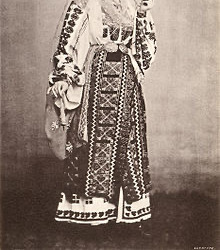
Romanian Traditional Dress

Belarusian Traditional Outfits because I couldn't find just one alone
————————————————
Nikolai waited for Viorica to be done getting ready.
After an afternoon of prank calling Rûta (Nikolai's idea), silent calling Wanda (Nikolai's idea), stealing Adyelya's yogurt (Viorica's idea) and attempting to summon a demon (Viorica's idea); Viorica decided that she wanted to show him her traditional outfit and Nikolai could show her his.
Why she wanted to, he didn't know.
Nikolai tapped his foot, "Viorica! Hurry up!"
"In a second Kolya!"
Kolya, was a nickname for him. Only his siblings were able to use it but Nikolai, for some reason, didn't mind it when she used it.
Viorica poked her head from out the door, her dirty blonde hair covered with something called a maramă, "Are you ready for this?"
"Sure I guess."
Viorica stepped out of the room and spun around in a small circle (Nikolai vaguely remembered it being called a fotă), "So what do you think?"
Nikolai's first thought was to say that she looked beautiful and so he did, "You look beautiful."
Viorica punched him lightly in the shoulder, "You don't look too bad yourself."
Nikolai felt his ego puff up a little bit but it didn't show on his face. He picked at his partki, "Thanks."
His traditional outfit was a little less, embellished, than the traditional outfit for Belarusian women. He preferred it that way since it meant less things to fuss about.
The traditional outfit of a Belarusian man consisted of a kashulia (a shirt), partki (pants) and a belt with some designs at the hems of the festive shirt, the collar, front opening and cuffs.
Nikolai looked at the smile on Viorica's face, "Let me guess, you want to tell me about your dress."
"Damn right Kolya!"
She began her spiel, “At my house the blouse is called a lie and as you can see there is embroidery on the upper arm, the altiță, a horizontal row embroidered on the sleeve called increț, and there are diagonal stripes below the armpit and shoulder. Each lie is different based on the region your in.”
Nikolai interrupted, “Which lie are you wearing?”
Viorica paused for a minute, “I think it’s the Wallachia region?”
“You think?”
“I haven’t worn my traditional dress in a long time!”
Viorica plopped down on the couch and Nikolai sat down too.
Viorica asked abruptly, “When do you think Adyelya will realize her yogurts are gone?”
“Probably whenever she comes back to her house.”
“Yeah, you’re probably right.”
“Horror movie night as we wait for our doom?”
“You had me at ‘horror movie’.”
The End
————————————————
This was rushed, sorry dudes! And late but I care less about that.
Hope you enjoyed dudes!
- Rae 💜🖤
10 notes
·
View notes
Photo

Vogue Paris September 1999 - Romanian traditional couture from Oltenia ("maramă" - handwoven silk (borangic) headdress, "cojoc" - hand embroidered sheepskin coat from Vădastra, "IA" - handwoven and handmade embroidered Romanian blouse, "vâlnic" - circular pleated skirt with metallic thread embroidery from Mehedinți region).
177 notes
·
View notes
Text
Mai fă încă un pas ! [Isaia 40 : 21 – 31]
Mai fă încă un pas ! [Isaia 40 : 21 – 31]
„Nu ştiţi ? N-aţi auzit ? Nu vi s-a făcut cunoscut de la început ? Nu v-aţi gândit niciodată la întemeierea pământului ?
El şade deasupra cercului pământului, şi locuitorii lui sunt ca nişte lăcuste înaintea Lui ;
El întinde cerurile ca o maramă subţire şi le lăţeşte ca un cort, ca să locuiască în el.
El preface într-o nimica pe voievozi şi face o nimica din judecătorii pământului. De abia…
View On WordPress
0 notes
Text
Cadouri în valoare de 3000 de euro, primite de Klaus Iohannis în 2017. Cel mai scump: un tablou estimat la 500 de euro
Preşedintele Klaus Iohannis a primit, anul trecut, 41 de obiecte cu prilejul unor acţiuni de protocol, care au rămas în patrimoniul Administraţiei Prezidenţiale. Între acestea: un tablou realizat de Givi Kolelishvili, o baionetă personalizată din partea Forţelor Speciale, butoni din aur, o maramă din borangic, un decantor & o cască de protecţie.
***
Valoarea totală a bunurilor primite de şeful statului în 2017 este de 2.752 de euro (12.934,40 de lei).
Cel mai scump cadou primit de preşedintele Iohannis, anul trecut, este un tablou (un peisaj de iarnă) realizat de Givi Kolelishvili, estimat la 500 de euro.
Potrivit listei publicate de Administraţia Prezidenţială, printre cadourile primite de şeful statului în 2017 se mai numără:
– o baionetă personalizată – Forţele pentru Operaţii Speciale din Armata Română, în casetă de prezentare, în valoare de 200 de euro;
– un decantor din sticlă transparentă, marca Tiffany&Co (250 de euro);
– o cască de protecţie personalizată, pentru activităţi de pompieri şi servicii de intervenţie în situaţii de urgenţă (150 de euro);
– butoni pentru cămaşă din aur de 14 K, lucraţi manual, din colecţia „Gold Jewellery of the Island of Pag” (150 de euro);
– o urnă din argint, în casetă de prezentare din pluş roşu (100 de euro);
– un tablou reprezentând doi elefanţi (100 de euro);
– o sabie decorativă, în casetă (80 de euro);
– un stilou Poenari lucrat manual, din compozit complex, placat cu aur, model Baron Business (80 de euro);
– o maramă din borangic (30 de euro);
– un bol de sticlă rotund personalizat cu însemnele White House, în casetă (50 de euro);
– un set obiecte tradiţionale româneşti format din opinci, şosete împletite şi ceramică (60 de euro);
– clopoţei din ceramică realizaţi manual şi drapelul Brigăzii Multinaţionale NATO Sud-Est (20 de euro fiecare).
De asemenea, în patrimoniul Administrației Prezidențiale a rămas un telefon Huawei P10 Lite (valoare estimată la 180 de euro) primit de consilierul prezidenţial Bogdan Aurescu.
http://ift.tt/2mxxiYt http://ift.tt/2Dj84aP
0 notes
Text
New Post has been published on JurnalulBucurestiului.Ro
New Post has been published on http://bit.ly/2iufv0y
Cenaclul Literar : EMINESCU…
Ca un dor de Eminescu, visul nopții se destramă
Și clipește geana zilei în pridvorul unei stele,
În privirea ta, Poete, se așterne o maramă
Ce acoperă pustiul din adâncurile mele…
Ca o umbră, Eminescu, totdeauna vine-pleacă,
În cerdacul său de visuri, clipele se fac suspine,
Când privirea ta, Poete, în adâncuri se apleacă,
Numai clipa rătăcirii, parcă veșnic…pleacă-vine!
Ca un vers de Eminescu, reveria se răsfață
Parcă într-un zbor de aripi ce plutesc în altă lume,
Când rostirea ta, Poete, vine dintr-o altă viață,
Numai șoapta se răsfrânge, parcă într-un fel anume!
Ca un geniu, Eminescu e aceeași rătăcire,
Dumnezeu îl află-n ceruri printre sfinții Lui, aparte,
Când la ziua ta, Poete, îngerii ne dau de știre
Că durezi în altă viață, cea de dincolo de moarte…
Vasile Gogonea
0 notes
Text

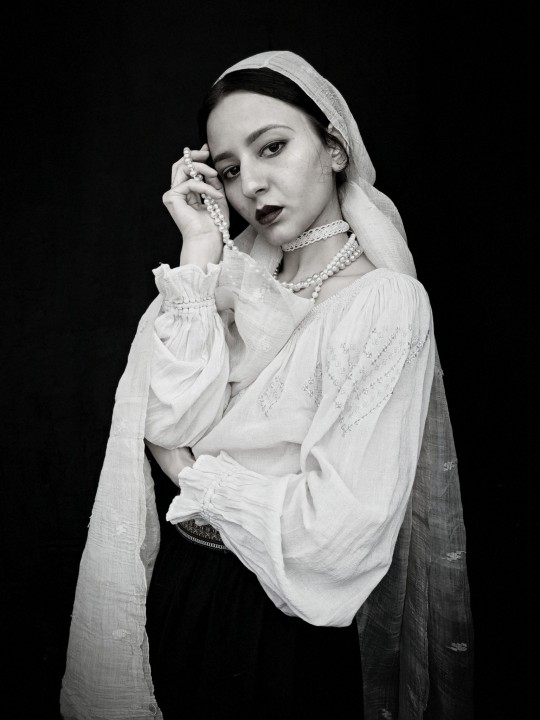
pearly approach
#romanisme#romania#romanian clothing#traditional clothing#romanian folklore#Teleorman#pearls#alternative art#dark artist#slavic folklore#eastern europe#balkans#maramă#port popular#darksideoffolklore#valeaielelor
21 notes
·
View notes
Text


oficial, portul ăsta nu există
#romanisme#romania#Romanian blouse#ie#traditional clothing#lablouseroumaine#romanian folklore#teleorman#maramă#slavic folklore#eastern europe#balkans
49 notes
·
View notes
Text

colder air
#romanisme#romania#romanian blouse#traditional clothing#teleorman#maramă#ielele#romanian folklore#eastern europe#slavic folklore#balkans#eerie
13 notes
·
View notes
Text
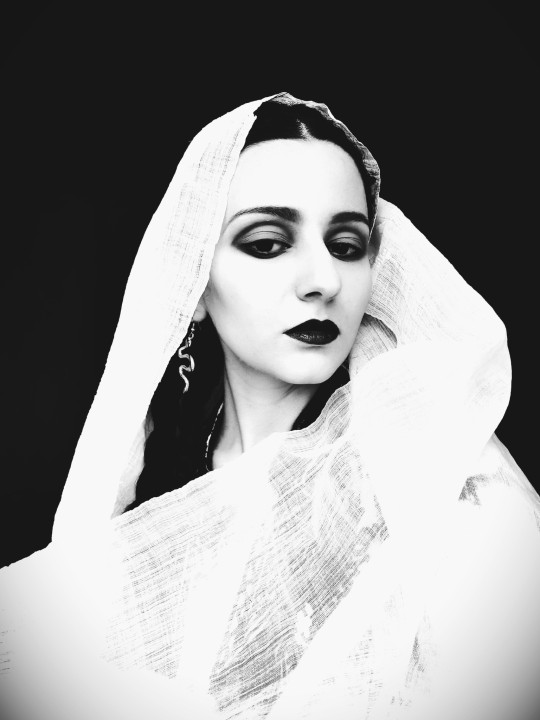
under spring's winter
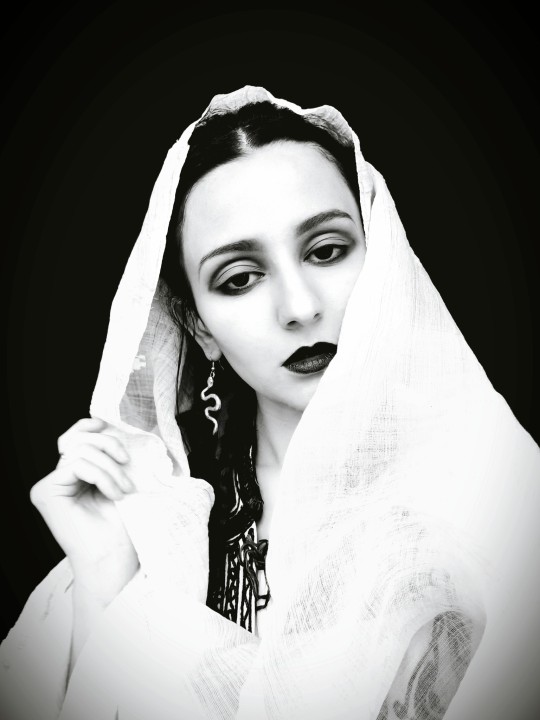
#romanisme#romania#romanian blouse#ie#ielele#lablouseroumaine#traditional attire#traditional clothing#romanian folklore#20s style#1920s makeup#black and white photography#dark art#romanian artist#beautifulbizarre#slavic folklore#balkans#eastern europe#maramă#teleorman
106 notes
·
View notes
Text

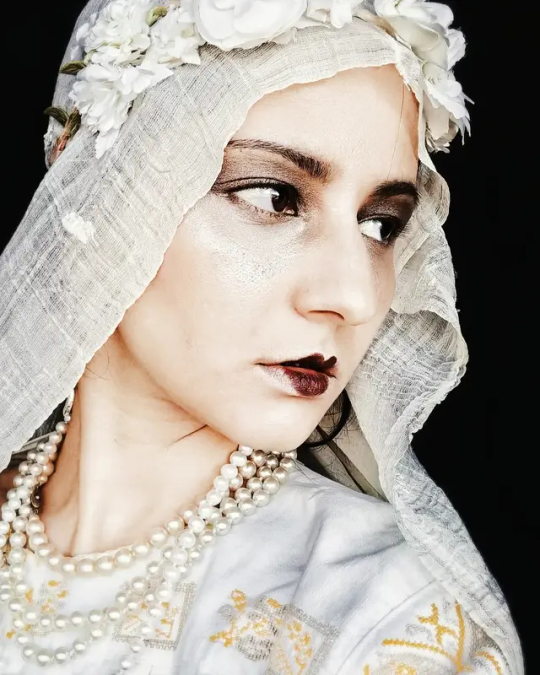
details
#romanisme#romanian artist#romanian folklore#romanian blouse#lablouseroumaine#ie#maramă#teleorman#slavic folklore#galliano 2009 inspired#traditional clothing#romania
23 notes
·
View notes
Text

all year round
#It started with Jennifer's Body makeup#romanisme#romania#Romanian blouse#lablouseroumaine#ie#maramă#Teleorman#romanian folklore#ielele#eastern europe#balkans#slavic folklore#folkloric#vampire
26 notes
·
View notes
Text

The mystic's song
#romanisme#romania#ie#romanian blouse#lablouseroumaine#romanian folklore#eastern europe#balkans#traditional clothing#slavic folklore#mystical#ielele#maramă#Teleorman
24 notes
·
View notes